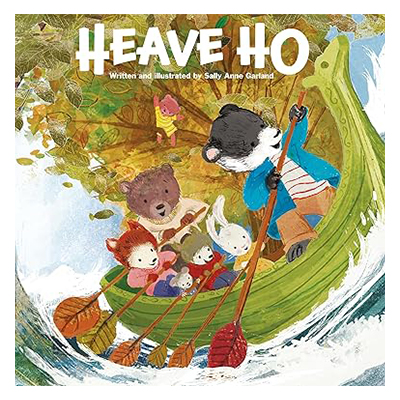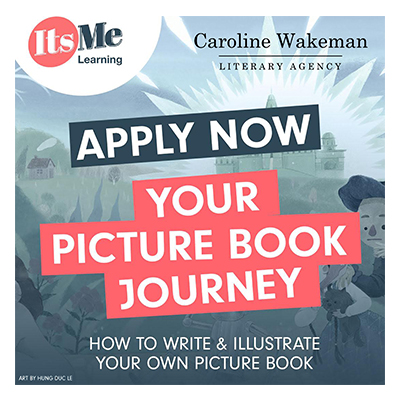New Author Interview – Barry Waldo!
1. Do any of the books you write come from your own childhood?
Absolutely. I grew up in the rural countryside with an active imagination. I had so much freedom to explore, camp, fish, catch bugs and adopt puppies galore…. Then came the horrors of high school. These experiences all impact the stories I write—sometimes as inspiration, sometimes more literal.
2. What are your top tips for writing a children’s book?
First, know why you want to do it. It’s important to have something to say or share with children. If it doesn’t matter to you, it won’t matter to them.
Second, spend the time to learn all the weird rules of the ancient publishing industry—they matter.
Third, have the patience of a god—all things are difficult before they are easy. Stick with it.
3. Where do you draw your inspiration from? How do you reflect this in your writing?
My ideas come from being a really curious person and reading as much as I can. You learn more when you’re alone than when you travel with friends or colleagues because you become a better listener. Curiosity builds and builds and eventually, you can’t sit in a coffee shop, store or restaurant and not listen to life happening around you. You start seeing patterns. Bear in a Bow Tie was inspired by seeing kids in airports carrying their favorite stuffed animal and scooting around on their roller bags in every airport in the world—they get so excited about seeing the world their way. While adults worry about their boarding priority, kids are excited about the adventure.
4. Which books have had the greatest impact on your growth as an author? Why?
A.A. Milne’s (Winnie the Pooh) poems and stories had a profound impact on me, first as a child and then again when I worked for Disney. He connected the imaginations of adults and children like no other. C. S. Lewis (The Chronicles of Narnia) made me hold my breath until the last page. Shel Silverstein (The Giving Tree) proved it’s possible to tell a story in a few hundred words that never quits teaching us about life. Neil Gaiman (Coraline; The Graveyard Book) took me to dark places that intrigued my imagination instead of scaring me. Agatha Christie made me dream of travel to foreign countries while making me suspicious of everyone all the time. Afterall, suspicion is just another form of curiosity.
5. What are 3 things which anyone starting in your industry should know?
- Learn and practice. Learn as many story structures and development tools as you possible can, try them out, and then use what works for you. Like everything else in life, if you don’t practice and learn, you don’t get better at it.
- Isolation. Geez, it can get lonely in your head all day if you’re an extrovert so develop a routine that works for you. Two things that work for me are physical exercise breaks and engaging with beta readers for feedback.
- “Fire the editor, hire the writer”. By that I mean, don’t reread your work every time you sit down to write. Little progress is made that way. Write first. Edit later.
6. What are some challenges you face in your field of work and how do you overcome them?
- Discipline: Unlike my previous career, there’s no schedule of meetings waiting for you every day. Your productivity is on your shoulders. If you don’t establish a routine, a thousand interruptions and tasks will seduce you. Don’t be like your friends at dinner who say, “I should write a book” every time you see them.
- Belief. You will doubt yourself. Forge forward anyway.
- Commitment. This is the easiest profession to just give up on and revert to something more predictable and known.
7. Do children around you strongly influence how you write your stories? How do they influence or inspire you?
Constantly. And they are the most brutal critics. But mainly, they remind me to fire the grown-up and hire the kid that still lives inside. They tear down all the adulting, brick by brick, that working as a Corporate Executive ingrained in me, and they remind me seeing the world through their eyes is wildly more fun, imaginative, scary and full of belly laughs.
8. How do you help children relate to your stories?
I listen to them. When you sit at a table full of crayons and ask them to draw their dreams or take you on an alien safari, you can’t help but to learn something new. You’ll learn about a kid with an egg for a head, a bird that turns into a suitcase or a donkey that poops candy, and a thousand other things that you may never want to imagine! Bedtime reading is incredible. They’ll tell me their favorite parts of stories, the ones that scare them and giggle at things that we as adults never imagined would ever be funny. And you’ll watch them squirm when you’re boring them and get up to show you their secret worm farm under their rug.
So, you write stories for them.
9. How have Children’s stories helped inspire your productions such as Monster High, Barbie or Hot Wheels?
Established characters or brands come with decades of background and historic fingerprints. This was the case with many of the properties I’ve worked on, including Winnie the Pooh, Barbie, Hot Wheels and Power Rangers. When we made The Heffalump Movie in 2004 at Disney, it wasn’t a new idea—it was a character and an idea that was born in a single line in 1926. You live and die by the story rules that have come before you, and if you’re lucky, occasionally get to add your fingerprints.
Monster High was completely different. It didn’t exist. There were no rules. It was off the corporate radar. I felt like a kid again where I was allowed to establish a world and characters with a great team of people that all enjoyed the pure pleasure of getting together every day to play.
Now connect the two: I had to study the established in order to create something entirely new. Star Darlings was a hybrid approach as Disney got involved and sculpted parts of the story with us.
10. How did becoming a producer change the way you approach storytelling?
It complicates it. My imagination is wired to build worlds, and worlds have rules. As a storyteller, I create the rules whereas as a Producer, I have to navigate and manage them. When combined in a single person, you have endless arguments with yourself. Producing also requires real world responsibilities like contract negotiations, schedules and budgets that can be the enemy of creativity. Not every story should be complex—sometimes a zombie apocalypse just happens, or a tiger comes to tea.
11. How did your career as an author help bring your stories to life?
Being a literal “author” is still very much a work-in-progress for me. Ask me again in a few years.
12. Is there anyone who strongly influenced your approach to writing?
I grew up in the public school system where I had some amazing teachers that were almost like parents to me. They opened my eyes to literature and the humanities, assigned us books to evaluate like The Grapes of Wrath, Death of a Salesman and morality plays like Everyman. That might sound normal to some people, but I grew up in a rural Arkansas building forts in the woods and fishing for catfish. They taught us about cultures, religions and introduced us to new foods. Our parents were happy that we were excited about learning new things, often things they, themselves, didn’t know—unlike today where there is fear-driven desire to control what a child can learn. Teachers know kids are smart and if you expose them to many different things, they will become curious adults for the rest of their lives.
13. Are there any exciting new projects you are working on at the moment?
I’m working on a new picture book, and I’ve got a few projects that take on the angst-ridden world of teenagers that bridge middle-grade and YA genres.
So many stories to tell, so little time!

Caroline Wakeman Literary Agency focuses on picture and early chapter books. Based in London and New York City, we have a team of literary agents specializing in children’s books and young fiction. Our goal is to create engaging stories for young readers.


